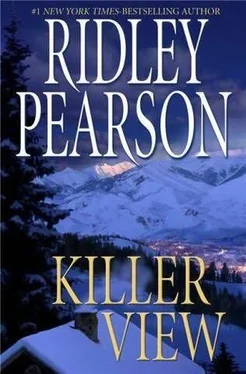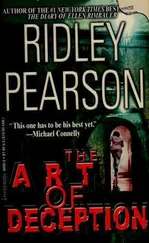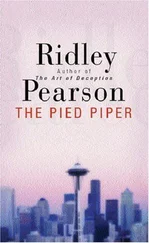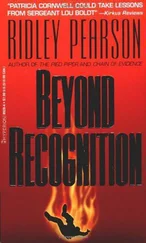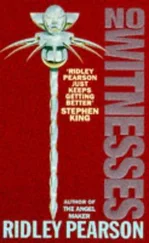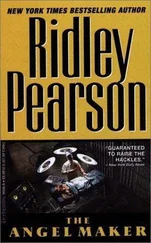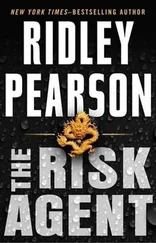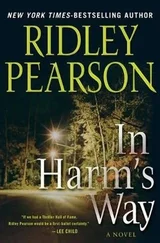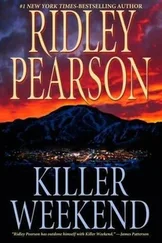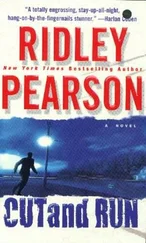“Roger Hillabrand?”
“The mud was on his car. I was going to suggest that you have the lab compare this to what we found on the girl’s shoes.”
“That’s certainly available to us.”
“Roger-or, more likely, Lunn-drove that car somewhere near where that girl-”
“Tulivich. Kira Tulivich,” he provided.
“-had been.”
“Ohio Gulch or Triumph,” Walt said. “The two most likely spots in this valley where you’d find contaminants: the dump and the old Triumph Mine. But the fact is that Kira Tulivich was at the wedding at Hillabrand’s. You’re the witness on that. Mud on his rails and her shoes-odds are, it’s from his house, or at least somewhere on his property.”
“Everything’s frozen solid and covered in two feet of snow,” she reminded him.
“Maybe not everything,” he said. “You want to help?”
“Of course!”
“Can you get yourself invited back up there?”
“You want me to spy for you?”
“Once we’ve confirmed we’ve got a match, my guys and I can work Ohio Gulch and Triumph, and we will. But ruling out Hillabrand would be the first step in any kind of an investigation. You start with the most obvious: that she was in those shoes, on his property, the night she was raped. The mud may have absolutely nothing to do with anything, other than she attended the reception. You’re not ‘spying, ’” he said, putting it in finger quotes, “you’re eliminating him from consideration.”
“I attended the reception and I didn’t come home with any mud on my shoes.”
“I’m just saying that’s where it starts. If I come at Roger Hillabrand with a request to collect evidence, there will be a line of attorneys at my door ten deep.”
“Okay. I accept. I’ll spy for you,” she said.
“It’s not spying. It’s just looking for some mud. He has a pond up there. But this would more likely be around a hot tub or along the edge of a heated driveway.”
“But contaminated?”
“I’m not saying I have the answers. I’m just telling you where we start.”
“I’m not going to find any mud up there, Walt. It’s frozen solid. The Escalade’s the connection. If you ask me, Roger’s guy, Sean Lunn, was at the same afterparty, the same bar-the same something-as Kira was. He probably doesn’t know it, but he’s the one who can help you. Not that he ever would.”
“Women’s intuition?”
“Don’t patronize me, Walt. Roger will never allow it. He’ll stick his boy on the private jet and send him to Brazil for all eternity rather than get involved with something here that can’t possibly do anything but sully his company’s name.”
“You’ve gotten to know him, I see.”
“Jealousy doesn’t suit you.”
Walt felt his face flush. Was he jealous? It struck him that maybe he was.
She spared him further embarrassment. “How long for the lab to compare the two dirt samples?”
“Several weeks, I would think. It’s never fast.”
Her face sagged.
“But we may not need it,” he said. “We already have a sample of the mud from her shoes. We took it at the hospital. I’m thinking all we need to do is run that sample through our mail sniffer. If it kicks as hazardous, that’s good enough for me: that gives us probable cause. We can send it off to the lab, but we don’t need to wait for specific results.”
Fiona nodded. “I’ll bring my camera. That gives me the added excuse to look all around. But it can’t be a hot tub. It’s on the Escalade’s step rail. It was thrown up onto the car when the car was going at a good clip. It’s got to be a road or a driveway, and the only thing that makes sense to me is that the contaminants are salts that keep the ground from freezing.”
“Like I said, that’s Ohio Gulch or Triumph. We’re on it.” Maybe it was the repetition, or her stating so confidently that it was salts keeping the ground from freezing, but, standing there, he suddenly knew exactly where and with whom to begin this discussion.
He’d nearly had his chance a few nights earlier.
“DO NOT RAIN,” WALT CHANTED TO HIMSELF, STARING UP through the Cherokee’s windshield. For an area that saw three hundred sun-filled days a year, the skies had picked this particular Monday to threaten, and it was in the low forties-the one time he was out searching for preexisting mud.
He could remember a time, not long ago, when the road out to the landfill had been a poorly maintained dirt track, leading to a giant, unsupervised pit in the ground. But now he drove on asphalt all the way out to a series of excavations, all surrounded by chain-link fence, monitored by an attendant in an entrance booth.
“Hey, Ginny,” Walt said, his elbow out the window, the Cherokee perched on a concrete slab, a vehicle scale large enough to weigh tractor trailers.
“Walt.”
“Just need a look around.”
“Not dumping nothing?”
“No, ma’am.”
“How’re the girls?”
“Wild. More like teenagers every day.”
“Sorry to hear it.”
“How’s your mother doing?” he asked.
“Same old same old. Nothing going to kill her.”
“Nor should it.”
“Second cancer in two years, but she’s still doing her own shopping.”
“The way it should be.”
“I hope I’m that strong when I’m eighty.”
“Right there with you.”
“Anything new on Mark Aker?”
“Working on it. Everyone in my department.”
“Is that what brings you here?”
“No. I’m just sightseeing.”
“Yeah. True beauty. And the smell is certainly worth a visit.”
“An aroma coma. May I pass?”
“Be my guest.” She tripped a button that lifted the red-and-white-striped barricade, and Walt drove off the scale and onto dirt. The surface was crushed granite, like nearly every road in the county, rock chips and sand mixed with a good deal of clay, the color of coffee with cream. He was no great judge, considered himself mostly color-blind, but the dried mud on Kira Tulivich’s shoes had been a pale pasty brown, almost gray. The dirt he saw here wasn’t close to that color.
The landfill pits were constantly being dug up, covered over, and redug, bringing every kind of unwanted thing to the surface. He drove into a big, open field of dirt, patches of litter trapped on the surface, leading to a sharp edge, beyond which a well-graded ramp carried the big Caterpillar tractors and loaders fifty feet down into an organized mass of trash and household debris at the bottom.
A light drizzle struck his windshield, and he cursed aloud in the confines of the car.
SEVERAL MILES NORTH of Ohio Gulch, Walt arrived at the turn for East Fork, a valley canyon running east of the highway and parallel to a like-named creek. East Fork represented the dichotomy of the valley, a crossroads where the blue-collar community of Triumph, situated on an abandoned mine site, met the multimillion-dollar homes that bordered the creek. The mine had been dug and exhausted a hundred years earlier, leaving behind vast fields of chemically poisoned gravel and clay tailings so toxic that nothing, not a single weed, would grow. The steppes of tailings, each the size of several football fields, rose in three successive levels, thirty to forty feet high, just as East Fork Road left the affluent neighborhoods behind.
A hippie community had sprung up in Triumph in the late 1960s, squatters willing to risk living on the top tier of the toxic mine tailings. For thirty years, Triumph had been listed as among the nation’s top five most toxic sites on the EPA’s Superfund list. No cleanup money had ever been allocated. Despite health warnings, the residents stayed. As land values escalated, the squatter shacks grew to trailers, mobile homes, and even a log cabin or two. The result was a ramshackle assortment of dwellings whose occupants had reputations as eccentrics, renegades, and, in some cases, outlaws.
Читать дальше
